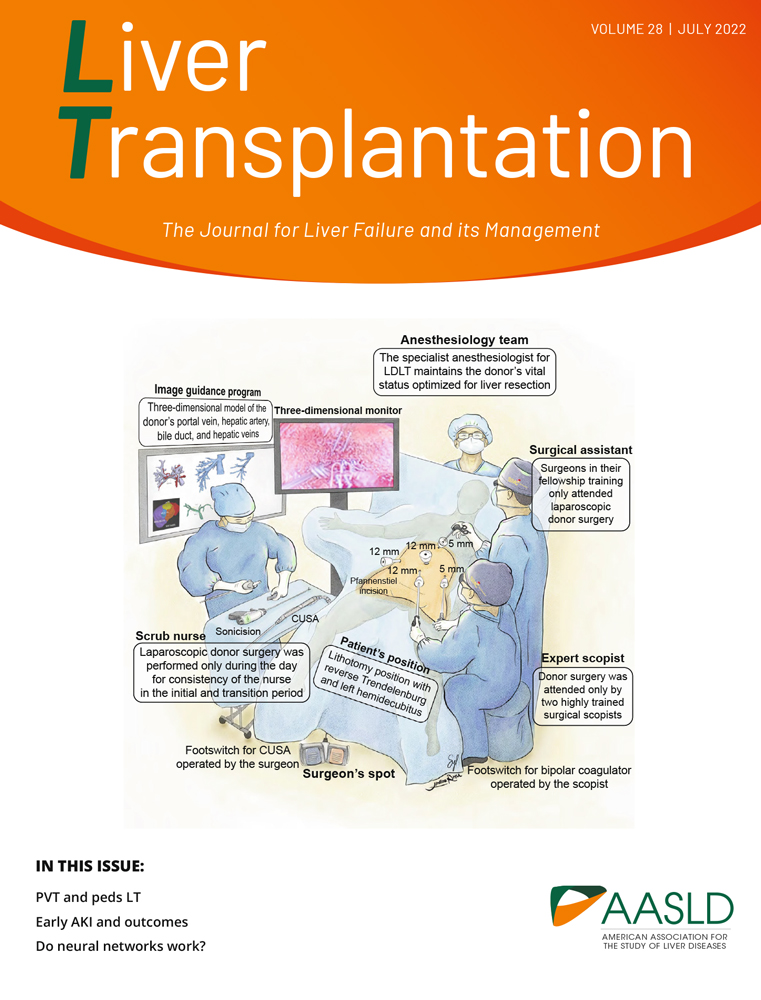Portal vein complications and outcomes following pediatric liver transplantation: Data from the Society of Pediatric Liver Transplantation
Funding information
Our work was supported by the Society of Pediatric Liver Transplantation (SPLIT) Council Award.
Abstract
Children who undergo liver transplantation are at risk for portal vein complications (PVCs) including thrombosis (PVT) and stenosis (PVS). Using multicenter data from the Society of Pediatric Liver Transplantation, we analyzed the prevalence, timing, and risk factors for PVC following a first liver transplantation, and assessed the potential impact of PVC on patient outcomes. Our cohort included 4278 patients, of whom 327 (7.6%) developed PVC. Multivariate analysis discovered several factors independently associated with PVC: younger recipient age, lower weight at time of transplantation, diagnosis of biliary atresia (BA), receiving a technical variant graft (TVG), warm ischemia time over 3 h, PVT in the recipient’s pretransplantation native liver, and concurrent hepatic artery thrombosis (all p < 0.05). Subgroup analysis of those with BA found higher prevalence in patients transplanted at less than 2 years of age and those with TVGs. There was no difference in PVC prevalence among patients with BA with vs. without prior Kasai portoenterostomy. Most PVT (77.7%) presented within 90 days after transplantation. Patients with PVC had a higher risk of graft failure (23.9% vs. 8.3%; adjusted hazard ratio [HR], 3.08; p < 0.001) and a higher risk of death (16.4% vs. 8.9%; adjusted HR, 1.96; p = 0.01). Recurrence after retransplantation was similar to the overall prevalence in the cohort (8.2%). Our results recognize the common occurrence of PVC following pediatric liver transplantation, describe independently associated risk factors, and determine that patients with PVC have worse outcomes. Further studies are needed to improve PVC prevention, detection, and management strategies.
CONFLICT OF INTEREST
Nothing to report.




